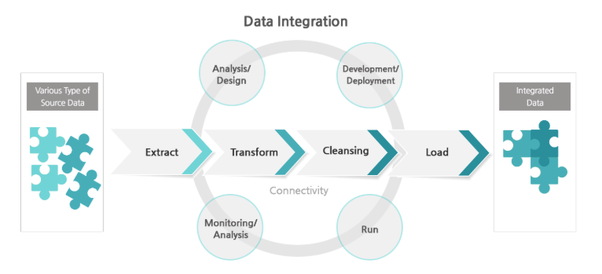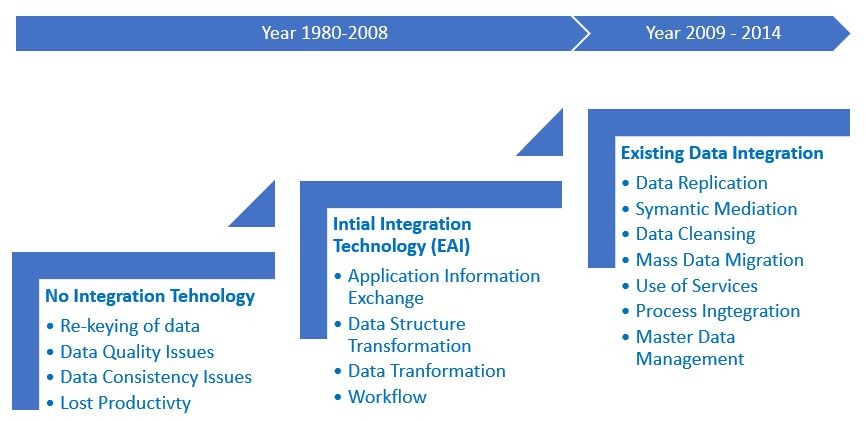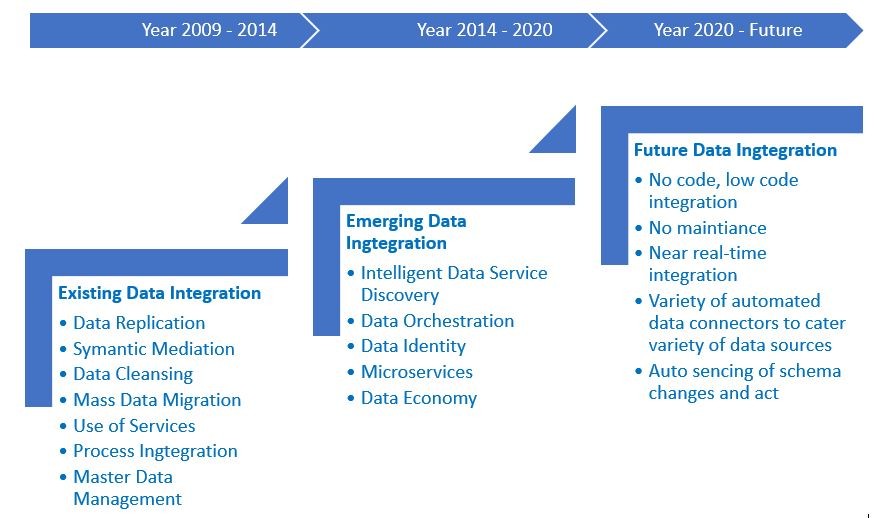By Aaron Raymo, Sr. Director of Demand Generation
Every business organization has this fundamental need to effectively manage the information available to it and to coordinate and harmonize the activities of its technology and human resources. Businesses can accomplish this via several avenues in our current digital era. This includes enterprise data integration, the automation of business workflows using a workflow automation platform, and by enabling different systems to work with each other through application integration and application programming interfaces (APIs).
Let’s go back and review a brief history of the evolution of these enabling technologies, and look at how their deployment assists businesses today.
Developments in Data Management and Data Integration
The term data management describes the activities involved with gathering and organizing information, as well as the steps enterprises take to extract business intelligence from this data, and then putting it to profitable use.
Data management as a concept dates back to the 1960s. It emerged as a response to the intensely manual and punch card-related operations of mainframe computing. Its evolution continued with the development of first-and second-generation programming languages and database management systems. Oh how far we’ve come!
With the emergence of the internet, the architecture of data pipelines led to the development of the ETL (Extract, Transform, Load) systems, which are central to data integration.

[Image source: LinkedIn]
Data integration brings together information from various sources in a centralized location, such as a data warehouse or data lake. The Enterprise Application Integration movement of the 1990s was the first of a set of enabling technologies that removed the need to enter data manually each time it moved from system to system.

[Image source: LinkedIn]
More recent data integration systems tend to leave large volumes of data in place – whether it be structured or unstructured, in private clouds, public clouds, or traditional systems. This new generation of data integration tools relies heavily on services and microservices.

[Image source: LinkedIn]
The Emerging Role of API Integration
An Application Programming Interface (API) is a set of rules defining how different applications can communicate with each other. The first conceptual API was a perforated paper tape software library for the 1940s EDSAC computer system.
The first modern API was the 2000 Salesforce API. Modern APIs enable software developers to read data from servers, and businesses to directly import information from open business registers.
The Rise of Workflow Automation
Workflows break down complex processes into a sequence of smaller, more specialized tasks. The first notable workflow in history was Henry Ford’s automotive assembly line of 1913, which significantly reduced the time needed to build a single car from 12 hours to 1 hour and 33 minutes while lowering production costs and reducing the length of a working day.
IBM introduced its first workflow automation platform in 1993. Since then, hyperautomation has continued apace, as businesses replace lengthy and error-prone manual processes with automated workflows that increase productivity, improve operational efficiency, and reduce costs.
How These Technologies Help Today’s Businesses
With a modern data integration solution, organizations can leverage business intelligence integration to refine data quality and optimize their supply chains. For example, a data integration platform with real-time monitoring and predictive analytics can help e-commerce websites to integrate their product databases with their enterprise resource planning (ERP) software, and automatically order new items when stock levels run low.
Combining workflow automation with API integration, organizations can ensure the smooth transfer of data between various platforms and business systems, while optimizing and streamlining their business processes. These may include document management, procurement and purchase approvals, service delivery, or operations like recruitment, training, and marketing.
Automated workflows reduce dependence on error-prone manual processes such as data entry and eliminate repetitive tasks. API integration is the medium enabling disparate systems to communicate and coordinate with each other, as these workflows proceed. For instance, in a document management solution, businesses can store their paperwork in an ERP system, using simple API calls to access all documents relevant to a given transaction.
As hyperautomation gathers pace and companies struggle with system optimization, application integration and data integration, businesses need to quickly build, deploy, and scale new automation tools. That’s where the Jitterbit workflow automation platform fits in and truly worth discussing in greater detail.



